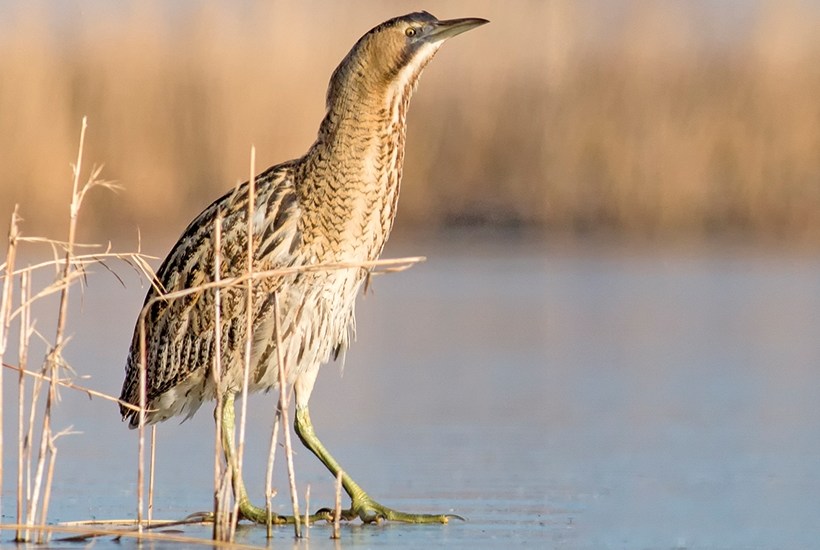Bitterns are booming, both literally and metaphorically. These handsome brown birds from the heron family make a noise quite unlike anything else in Britain and we are lucky to be able to hear it. If there is such a thing as a birding bucket list then hearing a bittern’s ‘boom’ — the loudest bird call in the country — should be on it.
Before the bittern starts booming he performs a warm-up ritual called grunting. He strengthens his throat muscles, which expand to turn his gullet into an echo chamber. His powerful muscles make up a fifth of his body weight and can propel the sound of his boom for more than three miles.
As for the sound itself, although it has been recorded at 100 decibels in volume, it is far more musical than the word ‘boom’ suggests. Less Brian Blessed shouting, more the Righteous Brothers during the first few bars of ‘You’ve Lost That Lovin’ Feelin’’. Others have compared it with the sound of those jugs in bluegrass music from America’s Deep South. For me, I’d describe it not so much a ‘boom’ as an ‘oom’ — try going ‘boom’ from the back of your throat but without moving your lips.
It is the males who boom and each call is unique, like an audible fingerprint. This makes it easier to monitor numbers. In the 1990s there were just 11 males across the whole of the country, putting bitterns on the brink of UK extinction and not for the first time. A hundred years earlier they almost died out as a result of shooting, slow breeding and the loss of reedbeds, their habitat.
Before then, the bittern was fairly common and had several regional nicknames, such as bog blutter, buttle, miredrum, bumbagus and bitore, which Chaucer says ‘bombleth in the myre’. In the 20th century bittern numbers crept up but it was always a precarious existence. By the 1990s it was decided something had to be done if we were to keep these birds in Britain and, helped by a grant from the EU, the Royal Society for the Protection of Birds pioneered a project to restore reedbeds across 13 sites. This involved not just growing reeds but maintaining water levels within them, reshaping pools and ditches and controlling the growth of other vegetation. Some of this requires quite complicated hydro-engineering, with networks of pipes and sluices linking dozens of pools and channels so that when the water level drops in one it can be raised with water from another.
The project worked. There are now around 200 bitterns in the country. As someone who lives and works near an area of Suffolk within earshot of a reedbed, the boom of bitterns was the soundtrack to my summer last year.
At the beginning of the century, researchers from the University of Pisa looked into the timing and consistency of the booming in a paper for the Italian Journal of Zoology. During the bitterns’ mating season in the spring, the booms are clearly for the purpose of attracting a mate, but the males carry on booming into the summer, well after chicks are born. The Italian team believe this may be a way to draw the mothers to a good spot in the reedbeds to grab a fish for their offspring. It appears to be the only paternal duty the fathers bother with.
Got something to add? Join the discussion and comment below.
Get 10 issues for just $10
Subscribe to The Spectator Australia today for the next 10 magazine issues, plus full online access, for just $10.
You might disagree with half of it, but you’ll enjoy reading all of it. Try your first month for free, then just $2 a week for the remainder of your first year.














Comments
Don't miss out
Join the conversation with other Spectator Australia readers. Subscribe to leave a comment.
SUBSCRIBEAlready a subscriber? Log in